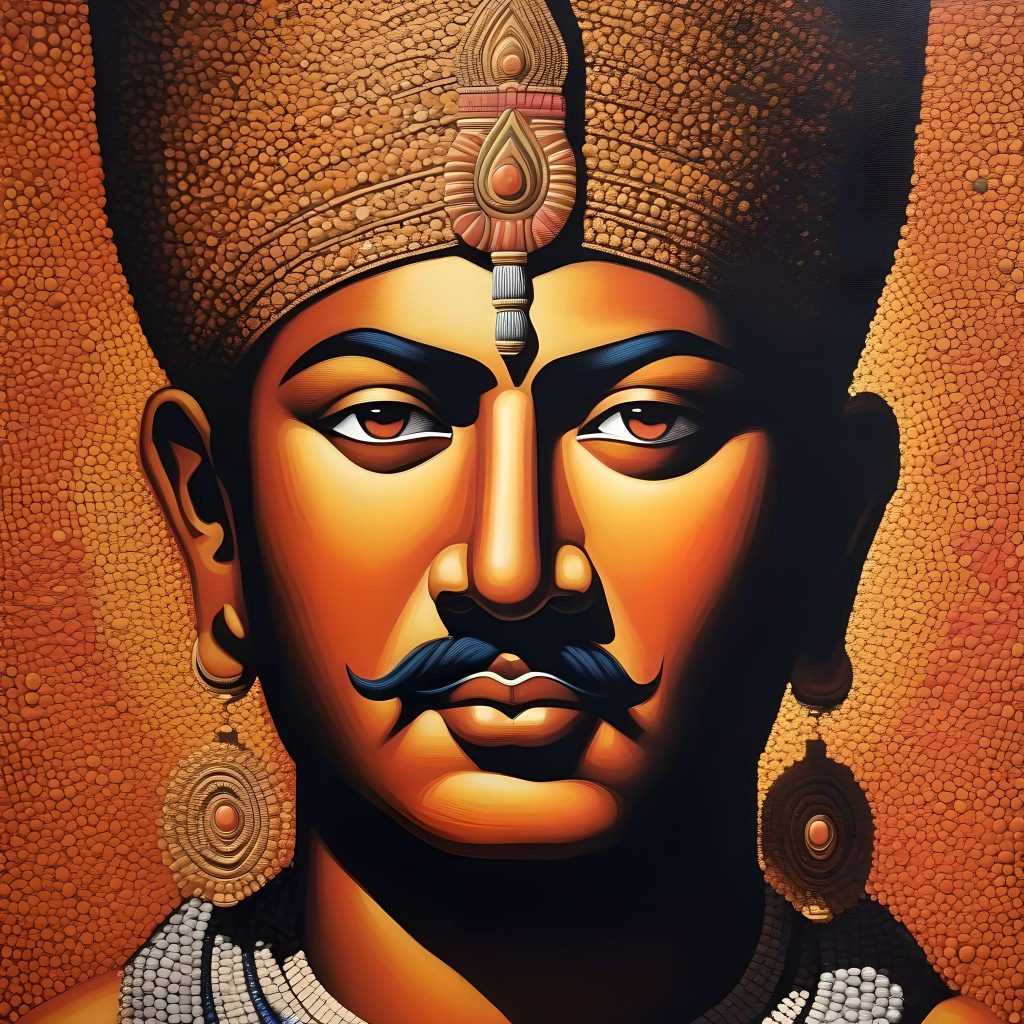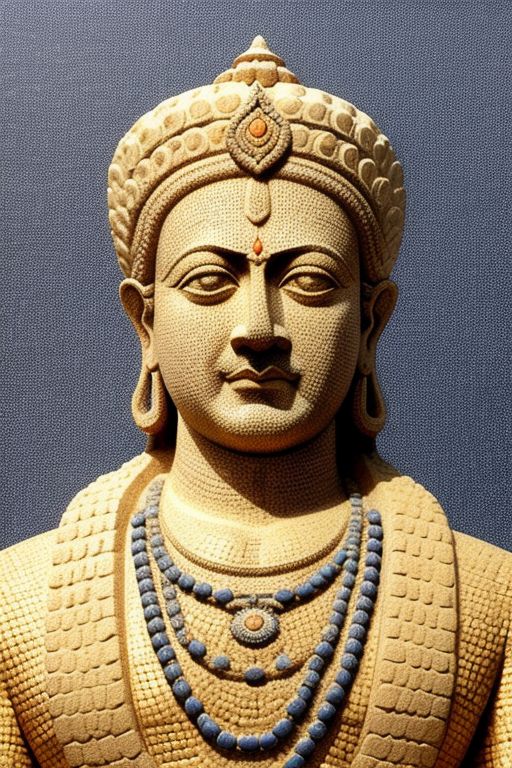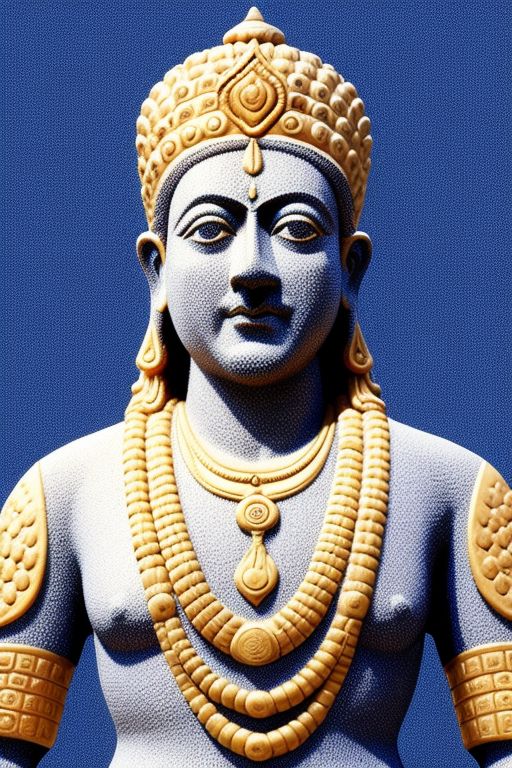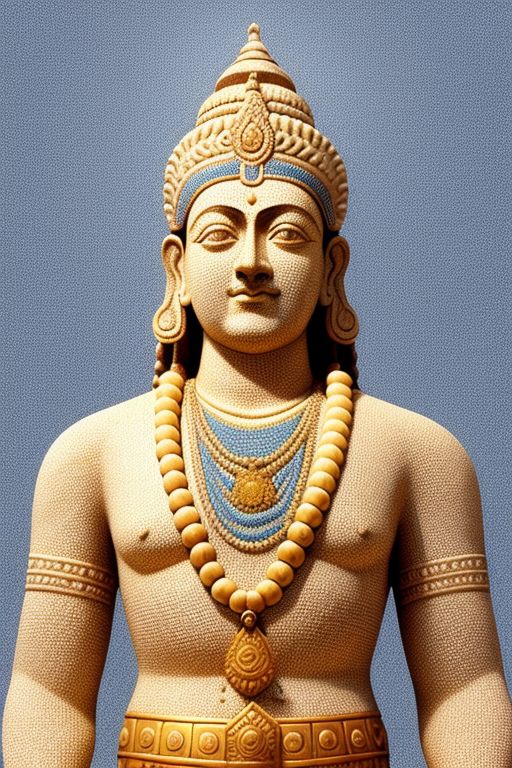In the Style of pointillism create an image of Ashoka the Great – A Maurya emperor of India- Ashoka was of medium height- with a robust build and a calm- dignified demeanor. He had a round face- full lips- and a benevolent expression. — using Vivid Color

Ashoka the Great, also known as Ashoka Maurya, was one of ancient India’s most influential and revered rulers. Born in 304 BCE, Ashoka ascended to the throne of the Maurya Empire after a fierce struggle for power. Initially known for his military conquests and ruthless ambition, Ashoka’s reign took a transformative turn following the brutal Kalinga War, which resulted in immense loss of life and suffering. Deeply affected by the devastation he witnessed, Ashoka renounced violence and embraced the principles of Buddhism, becoming a champion of peace, tolerance, and social justice.

Under Ashoka’s rule, the Maurya Empire flourished, expanding to encompass much of the Indian subcontinent and promoting economic prosperity and cultural exchange. However, Ashoka’s greatest legacy lies in his commitment to moral and ethical governance. He issued a series of edicts known as the “Ashoka Rock Edicts,” inscribed on pillars and rocks throughout his empire, which promoted religious tolerance, nonviolence, and compassion towards all living beings. These edicts, written in Prakrit and Greek, serve as a testament to Ashoka’s vision of a just and humane society.

Ashoka’s reign ushered in a golden age of peace and prosperity in ancient India, characterized by religious pluralism, social welfare programs, and advancements in art, architecture, and literature. His legacy endured long after his death, influencing generations of rulers and shaping the cultural and spiritual landscape of the Indian subcontinent. Today, Ashoka is celebrated as a symbol of enlightened leadership and moral authority, revered for his contributions to the promotion of peace, tolerance, and human dignity.

